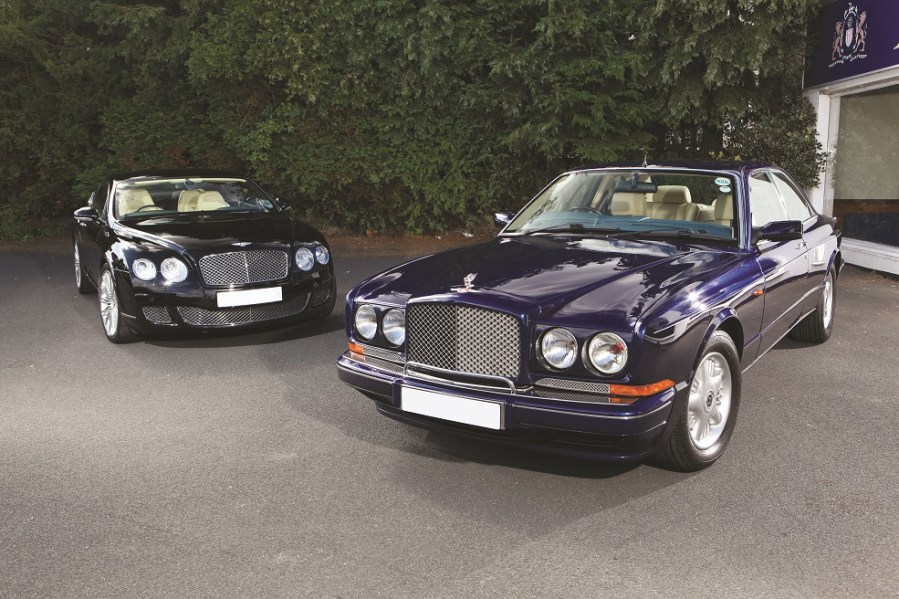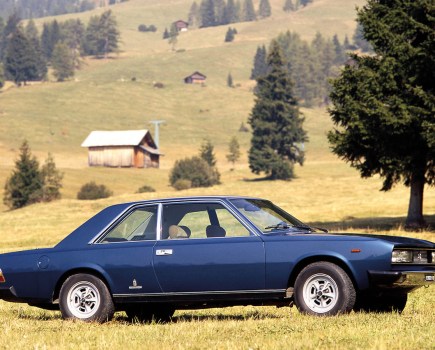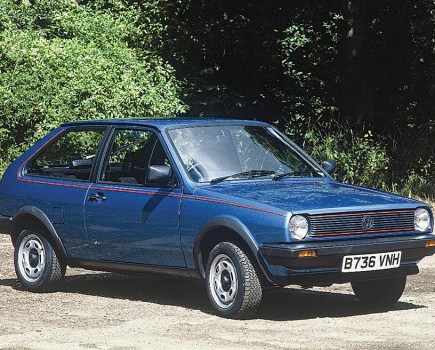Modern classic meets thoroughbred aristocrat as we ponder which £40k Bentley Continental gets the vote today.
On the face of it, these would appear to be two very similar cars, albeit separated by an automotive generation: both expensive, glamorous two-door coupes, both bearing the winged Bentley badges and sharing the historic Continental model name which evokes images of streamlined ’50s Bentleys whisking their occupants to the Côte d’Azur.
In practice though, they’re really very different: one is a handcrafted exclusive product which took the ageing Spirit/Shadow platform to its very limits, while the other was born from a brief to improve the sales volume of the Bentley brand in order to ensure its survival and is a temple to modern production processes and technology.

The pricing is perhaps the perfect illustration of their differences: the 1997 Continental R in our photos would have £187,000 before extras, while the 2008 Continental Speed GT retailed for £138,000. Factor in the ten years between them and you see just how exclusive the older car was.
Few Classic Car Mart readers will have failed to notice the rising enthusiasm for all things modern classic in recent years and as values of the early cars fall, the high-tech GT is an enticingly affordable proposition – to buy, at least. As values of the older Continental R and T rise, they meet ten-year old examples of the later one on their way down, with figure of around £40,000 being sufficient to secure a very nice example of either car. Which makes the better bet?

Continental R
Even in a modern streetscape filled with lumbering SUVs, the Silver Spirit-based cars remain imposing vehicles and the Continental is no exception. It’s based of course on the same floorpan as the four-door saloons but somehow the extravagance of having a car this size with just two doors adds to the occasion.
The Continental’s shape has worn the passing of the years well, quite possibly because its basic three-box shape wasn’t particularly on-trend when it first appeared. This is a product of Crewe going its own way, regardless of whatever automotive styling directions were in vogue at that moment in the mainstream market. As a result, what might at first sight seem like a straightforward two-door version of the Mulsanne/Spirit is in fact a particularly elegant piece of work and very different from its four-door sibling.
The first unique Bentley model under Rolls-Royce ownership since the 1950s, the Continental was intended to replace the awkward-looking Camargue as a range-topping model and had its roots in the ‘Project 90’ concept at the 1985 Geneva show, produced after then managing director Peter Ward expressed a desire for a Bentley to stand apart from the Rolls-Royce-derived cars.

Styled by John Heffernan and Ken Greenley, the concept was revived as the more practical Continental R in 1988 and was in fact based around a proposal for a replacement Rolls-Royce Corniche. One little-publicised fact is that the concept car inspired the Sultan of Brunei into commissioning the huge number of ultra-expensive special models which it’s reckoned kept Rolls-Royce afloat during the next few years.
The total development budget for the Bentley Continental R and its later Azure-badged convertible derivative was tiny by car industry standards at just £19m and the car entered production in 1991 at the rate of around six cars per week.
Although the Continental wore Mulliner badging, unlike the older Continentals they were constructed at Crewe using bodyshells supplied by Park Sheet Metal of Coventry and were very much a factory production model.

Underneath, the running gear was identical to the contemporary Turbo R, which in the case of this 1997 example means 385bhp and 553lb.ft torque. Despite its not-inconsiderable bulk of 2.4 tonnes, that’s enough to give the big coupe serious pace: 60mph in just over six seconds and a top end of over 150mph.
It might seem an odd comment about a car which was the price of a decent house when new, but next to its younger brother, the Bentley Continental R seems classy and understated. The subtly flared arches give it a quiet, muscled presence without needing enormous rims and shallow-profile rubber to make it look the part. It’s a similar story on the inside too, with the traditional wood and leather of the Rolls/Bentley cabin of the era very different from the bright embellishments and piano black gloss of the GT.
This car predates the era when cars with sporting pretensions had to have a racy ‘engine start’ button, so waking up the six-and-three-quarters Rolls V8 involves nothing more than twisting a key in the dash-mounted ignition, the age of the car’s electrical architecture betrayed by the separate alarm keyfob.

It’s impressively refined in the finest Crewe tradition and once you’ve swung the heavy doors shut, the engine note is reduced to a distant woofling. Lift the selector, slip it into drive and with a lean on the long-travel throttle pedal the car oozes forwards.
The Bentley Continental R has a relaxed feel to it which is notably different from the more eager GT, with a more lazy engine note and a more mellow demeanour. In urban traffic speeds, it barely needs to rise much above idle to trickle the car through traffic, but once the road clears, it’s happy to oblige. A distant, almost imperceptible whistle is evidence of boost building and the prow rises slightly as the iron hand of that 553lb.ft pushes you in the back.
Even by today’s standards a well set-up Turbo R or Continental R is a fast car and it’s easy to see why the road testers were so awe-struck back in the mid ’90s. Quite simply a car of this bulk doesn’t really have any right to exhibit such pace. In other ways though, its age does show – the pattering over broken road surfaces for example, which the more rigid GT has licked, courtesy of modern computer-aided bodyshell design. In absolute terms though, for a 20-year old car it’s mightily impressive.

Continental GT
The story behind the Continental R’s high-tech descendant is a familiar one so we’ll keep the recap brief. When Volkswagen Group outbid BMW for Rolls-Royce in 1997 it later discovered the rights to the Rolls-Royce trademark didn’t come with the deal, which presented a fairly major blow to making the cars bearing the name.
With Volkswagen claiming that the Bentley brand was the prize it had wanted all along, a deal was eventually arrived at whereby Rolls-badged cars would be built at Crewe until January 1, 2003 after which time they would be produced by BMW which already had the builders busy down in Sussex to create its all-new Goodwood factory.
At this point the Crewe factory under Volkswagen ownership would produce only Bentley-branded cars and a new model was already well under way in the unlikely shape of the VW Phaeton. Said to be a pet project of VW Group chief Ferdinand Piëch, the Phaeton contained all the elements which would later go into creating the Bentley Continental GT, chief among them the W12 engine. Looking like a slightly bloated Passat, the anonymous Phaeton was packed with high-tech and although in many ways a massively costly folly, it did allow VW to fast-track development of the new Bentley: the brand’s first all-new model since 1931.

The W12 engine had first appeared in the Audi A8 in 2001 before appearing in the Phaeton in 2002, but in the Audi and VW models it produced ‘only’ 414bhp. In order to match the mighty heft of the old Turbo R models Bentley customers were used to, it needed more and this was duly achieved by bolting up a pair of KKK blowers alongside much modification of the block and internals. The result was a handy 552bhp, backed up with 479lb.ft torque at just 1600rpm, driving through a six-speed ZF automatic specially developed for the car and adapted to work with its standard four-wheel drive .
All this technology was wrapped up in a body which was claimed as being styled in-house in Bentley’s Crewe studios but which was the work of Dirk van Braeckel, a Belgian designer who had begun his VW Group career at Audi before heading up Skoda design before moving to Cheshire. His brief was to recapture the Bentley heritage without producing something self-consciously retro and he duly delivered: with its short front overhang and muscled haunches, the Bentley Continental GT has overtones of the ’50s Mulliner R-Type Continental but with a thoroughly modern clean look.
The structure of the bodyshell itself was impressive, too. One of Piëch’s goals with the Phaeton had been class-leading torsional rigidity and the Bentley followed suit. Making a car this size – especially one with pillarless side glass – rigid without being massively heavy is a big ask, but using technology including adhesive bonding and laser welding, VW and Bentley were able to keep kerb weight down to 2350kg. It’s a hefty beast, but not as hefty as it could be considering that it can seat four six-foot adults in comfort, yet achieve 198 mph and sprint to 60 mph in an impressive 4.7 seconds.

Underneath was found wishbones at each corner with anti-roll bars and an electronically controlled air suspension which allowed the car to squat by 15 mm at 100 mph. On the inside, the GT was a neat mixture of new world and old, with the high-tech elements neatly offset by subtle use of leather and hand finishing.
The Continental GT was announced to the press on March 3, 2003 at the Geneva motor show and by March 24, a staggering 3200 deposits had been taken for the new car. The enthusiasm was no doubt fuelled by the price, which at £110,000 was almost half that of the older, hand-built Bentleys.
After driving the older Continental, the GT is something of a culture shock. It’s obviously a much more modern car and even before you get as far as the driving seat you’ll have noticed little touches like the double-glazed side windows and the way the glass drops to clear the seal as you pull the door handle.

Inside, anyone who has spent time in a modern Audi will find the controls familiar, albeit many of them with a garnish of bright metal, a machined finish or similar to suit the Bentley’s more extrovert cabin and remind you that this is no A4 diesel. And this isn’t a criticism, either: after all, if you’re going to borrow switchgear from anywhere, Audi is just about as good as it gets and there’s no argument that the GT is beautifully put together.
The mighty W12 – which is in essence a pair of VW’s VR6 engines on a common crank – springs to life either by twisting the key or jabbing the console-mounted start button and its idle tells you just how different the car’s character is. With half as many cylinders again, it seems busier at idle, more urgent but no less refined, although a blip of the throttle reveals an exhaust note which hints very obviously at the huge power on tap.
Pressing the big Bentley logo and selecting drive, the car is more eager from a standstill than the older Continental, noticeably more responsive to smaller throttle inputs but despite its size, no more demanding to drive than a Golf. The steering at parking speeds is fingertip-light and the good visibility makes it easy to place in a crowded car park.

Out on the road, it’s supremely refined and way the immensely rigid shell manages to shrug off most of our scarred tarmac is one of the most noticeably differences between the two. Of course the W12 is quite happy pootling along in the school run traffic, but when there’s a clear stretch of road – and seriously, you’ll need a fairly long bit of road – an ample squeeze of the pedal sees it surge forwards in a way the older car can’t hope to match. The huge torque makes it feel lighter than it really is, while the four-wheel drive gives it a planted feel which makes it feel immensely secure.
On a gentle test drive near Balmoral UK’s Halesowen premises we were barely able to scratch at the car’s huge performance, but we know from previous experience that these big coupes can really be made to hustle – as indeed anyone will know who saw the Top Gear episode where a GT was rallied.
Ultimately, the strength of the GT is in the way it manages to be so very ordinary in some ways yet remains utterly outrageous in others and does convey just as much a sense of occasion as the older car. Here is a car your granny could drive to the Co-Op, and if she sneezed at the wrong moment could easily find herself touching nearly 200mph without noticing.

Verdict
As we said at the beginning, these are two very different cars which makes it both very easy and almost impossible to choose which one better deserves your £40k. The Continental GT is a car you could use every day, all year round, while the Continental R is of the age where to do that to it would just be criminal. It’s a car for special occasions, to be savoured and enjoyed as a reminder of times long gone, when Bentley didn’t need to worry about sales figures or the tastes of Premier League players.
It’s also likely to provide a very handy return on your investment in even the short to medium term, while the nicer Continental GTs like this one are still in the depreciation zone.
Financially, I’ll take the Continental R but if it’s a non-stop dash to the South of France, then give me the Continental GT Speed every time.





